Disclaimer: This blog post contains affiliate links. If you make a purchase through these links, I may earn a small commission at no additional cost to you. Learn More. Thank you for supporting our garden community.
The Best Organic Fertilizer for Lettuce Plants That You NEED
Lettuce is one of the easiest and fastest vegetables you can grow. But without the right fertilizer, it turns bitter, bolts early, or grows weak and limp. Whether you’re growing leaf, romaine, or butterhead lettuce, the truth is: fertilizer makes or breaks your harvest. If you want big, crisp, sweet-tasting leaves, this post gives you everything you need to know about fertilizing lettuce that actually works.
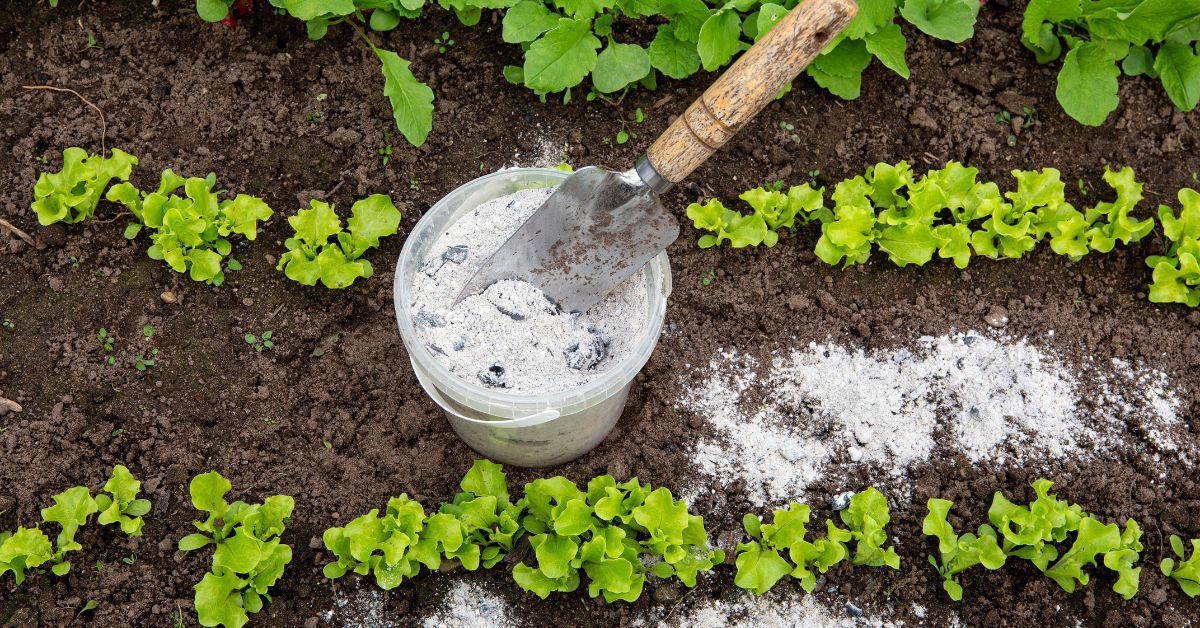
The Best Fertilizer for Lettuce Plants
Fertilizer is something that’s debated with lettuce plants. Especially considering that they grow so quickly and produce a good harvest in almost any soil.
But the truth is that the right fertilizer will give you a better lettuce harvest. But you have to use the right one.
I’m going to show you why lettuce needs fertilizer, the exact nutrients they need, the best times to fertilize, and the best fertilizers for lettuce plants.
So let’s get right into it.
Products:
Save 10% on your first Burpee seed order using code BURPEE10
Why Lettuce Needs Fertilizer
Compared to fruiting crops like tomatoes and peppers, lettuce is a light feeder. This means it actually doesn’t need a lot of nutrients to grow well.
But that doesn’t mean it can grow in poor soil.
It needs a steady stream of nutrients to produce flavourful lettuce greens, especially nitrogen.

Here are some signs your lettuce needs to be fertilized:
- Pale or Yellowing: If the leaves of your lettuce are slightly light in colour or full on yellow, then they probably need some nitrogen.
- Growing Slowly: If your plants are growing particularly slowly compared to other plants in your garden, then it’s likely that they need to be fertilized.
- Bitter Leaves: It’s not always the case, but bitter leaves can be caused by a lack of nutrients. It causes stress and makes the leaves bitter.
Look out for these signs to see if your lettuce plants are devoid of nutrients. They won’t necessarily show these signs, but if there’re really no nutrients, then you’ll notice them.
Can Lettuce Grow Without Fertilizer?
Of course you can grow lettuce without fertilizer. But is it optimal? No.
Lettuce plants, just like every other garden vegetable, need certain nutrients that would otherwise not be in the soil if you don’t fertilize.
So if you don’t actually put the nutrients in, then they can’t get it.
And they still might grow to maturity, but you won’t get the best possible harvest. The leaves might be smaller, more bitter, or yellow in colour.
To avoid these issues and get a great lettuce harvest, make sure to use the right fertilizer for lettuce.
What Nutrients do Lettuce Plants Need?
Lettuce needs both macro and micronutrients to grow well.
Macronutrients are needed in the greatest quantity, while micronutrients are needed in much less quantities.
But you can’t just dump a bunch of synthetic fertilizer and hope to achieve the best results. Here are the 3 main macronutrients that lettuce plants need:
- Nitrogen (N): Nitrogen is the most abundant nutrient in lettuce plants because it’s used for leaf and stem growth. All those leaves need a lot of nitrogen to produce well.
- Phosphorus (P): Phosphorus is used mainly for root development in lettuce plants. It’s also used for flowering, but that’s not why we’re growing lettuce.
- Potassium (K): Potassium is mostly used for overall plant health in lettuce. It does a lot of the smaller functions in the plants.
These 3 nutrients are used in the greatest quantities in lettuce plants.
Some micronutrients, like calcium, iron, boron, and magnesium, are necessary but used in smaller quantities in lettuce.
They’re mainly used for overall plant health and proper physiological functions.
Best Lettuce Fertilizer NPK (Lettuce Fertilizer Requirements)
NPK on fertilizers stands for nitrogen, phosphorus, and potassium. The letters are the symbols of each element on the periodic table.
Every commercial fertilizer has an NPK ratio on the package so you know the exact nutrient content of the product.
Each number represents the percent of each nutrient by weight. So an NPK ratio of 2-3-8 means the fertilizer has 2% nitrogen, 3% phosphorus, and 8% potassium.
The rest of the fertilizer is usually made up of fillers and other materials to bulk it up.
When looking for the right fertilizer, it’s hard to give an exact NPK ratio for lettuce plants. But generally, they need a high-nitrogen fertilizer.
A lot of people say to use a 10-10-10 fertilizer, but I generally avoid those high ratio fertilizers. They provide a balanced supply, not a targeted supply.
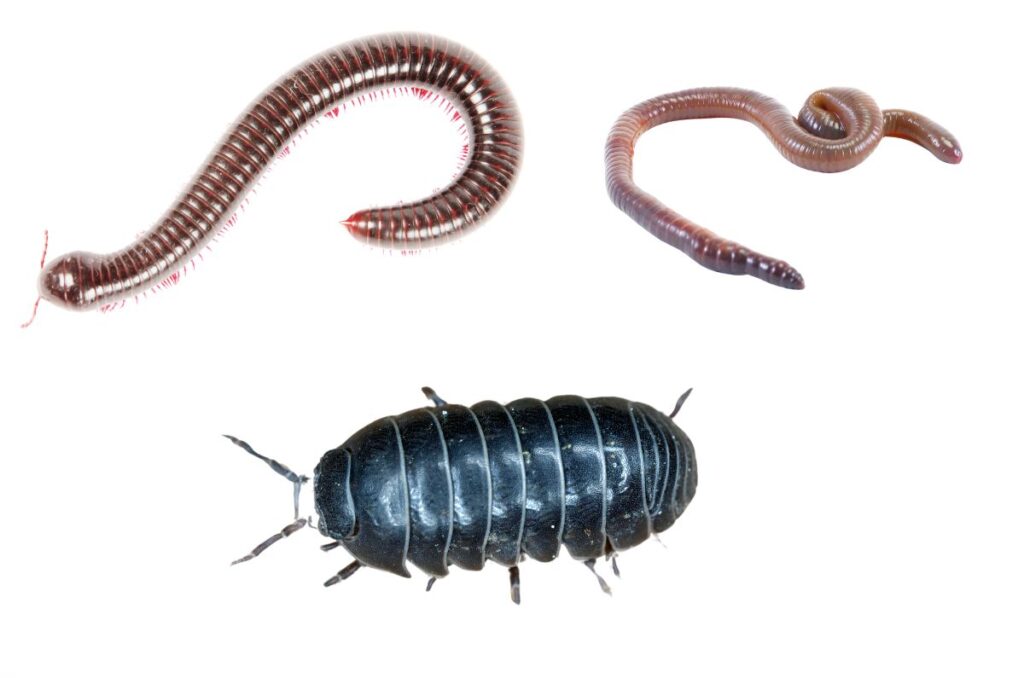
Why are Soil Macroorganisms Important?
Macroorganisms are large (not microscopic) organisms that break down large pieces of organic matter into smaller pieces. Things like leaves, wood chips, and grass clippings need to be chewed and broken down.
These organisms include worms, millipedes, beetles, and potato bugs. They eat and digest large pieces of dead organic matter, which is known as detritivorous.
When you put an organic fertilizer in your soil, the nutrients are not readily available to your plants just yet. They’re in the soil, but your plants can’t actually use them.
They’re in the form of organic matter, not readily available nutrients. This means that even organic fertilizers need to be broken down.
The smaller pieces of organic matter created by these organisms, along with the organisms’ excrement and the organic fertilizer, are further broken down by microorganisms.

Why are Soil Microorganisms Important?
Microorganisms, on the other hand, are microscopic organisms in your soil that break down organic matter. They finish the work started by the large organisms.
Fertilizers need to be broken down for the nutrients to become bioavailable for your lettuce plants. They get further broken down by microorganisms in the soil.
Large organisms can’t do all the work; microorganisms are what make the fertilizer bioavailable to your plants.
Without this decomposition process, your lettuce plants wouldn’t be able to absorb the nutrients. So the nutrients need to be broken down by microbes before your plants use them.
If you keep a healthy garden and avoid artificial products, you’ll usually have a ton of microorganisms in your soil already.
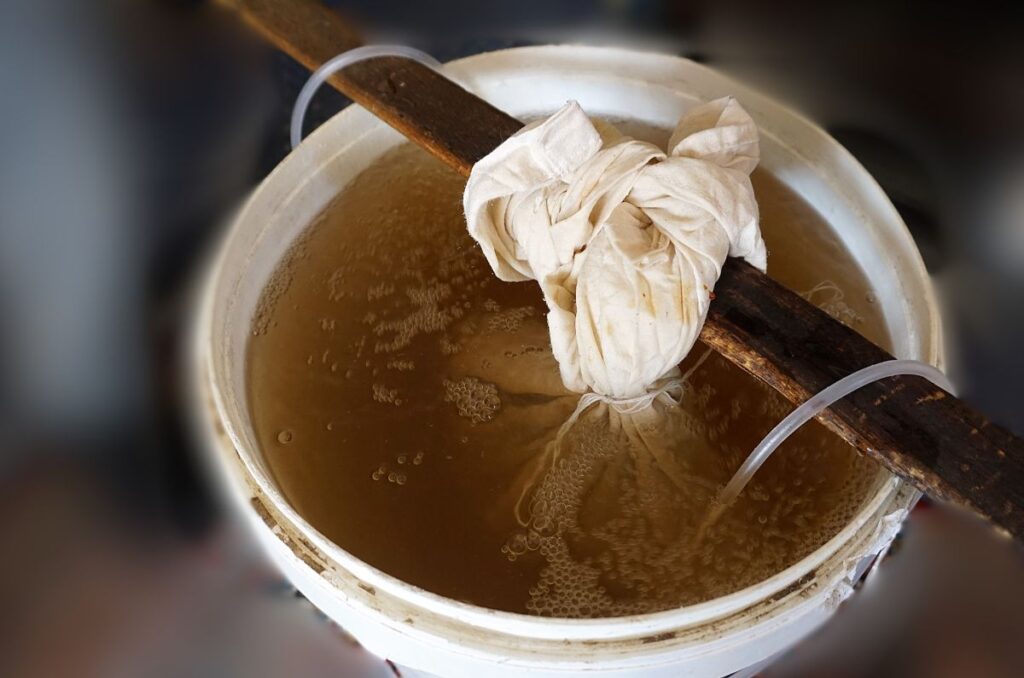
But if you want to increase their numbers, add some homemade compost or compost tea. These help to introduce large numbers of beneficial microbes to your soil.
Mulch can also increase the population of microorganisms in your soil, so make sure to use some. My favourite mulches are leaves and grass clippings.
Having a healthy mix of both types of organisms in your soil is ideal for healthy plant growth.
Granular vs. Liquid Fertilizer for Lettuce
Both granular and liquid fertilizers have their benefits for lettuce plants.
But you probably only have to choose one over the other because lettuce is a light feeder. So let’s see which one is better.
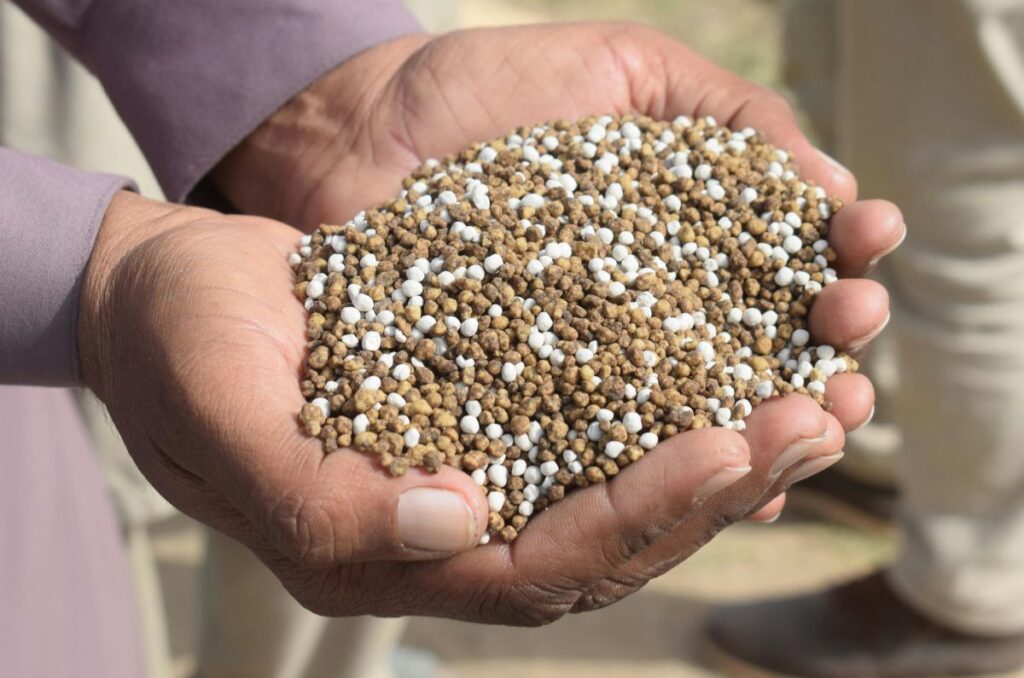
Granular Fertilizers
Granular fertilizer is made from dehydrating and grinding organic matter into a powder, making it look like flour.
Because of this, they release their nutrients over a longer period of time. The microbes need time to break it down into a bioavailable nutrient form.
That’s why you need soil that’s alive, not a pile of dirt.
They’re easier to apply as well; just open the bag and sprinkle a bunch on your soil. There are instructions on the package, but who’s going to read that?
Granular fertilizers are great for gardeners who want to fertilize their lettuce once throughout the whole growing season. They last for about 1 month in the soil, so about the time it takes for lettuce to mature.
If you have a lettuce variety that takes 70-80 days to mature, then you’ll probably have to do a second fertilizer application halfway through.
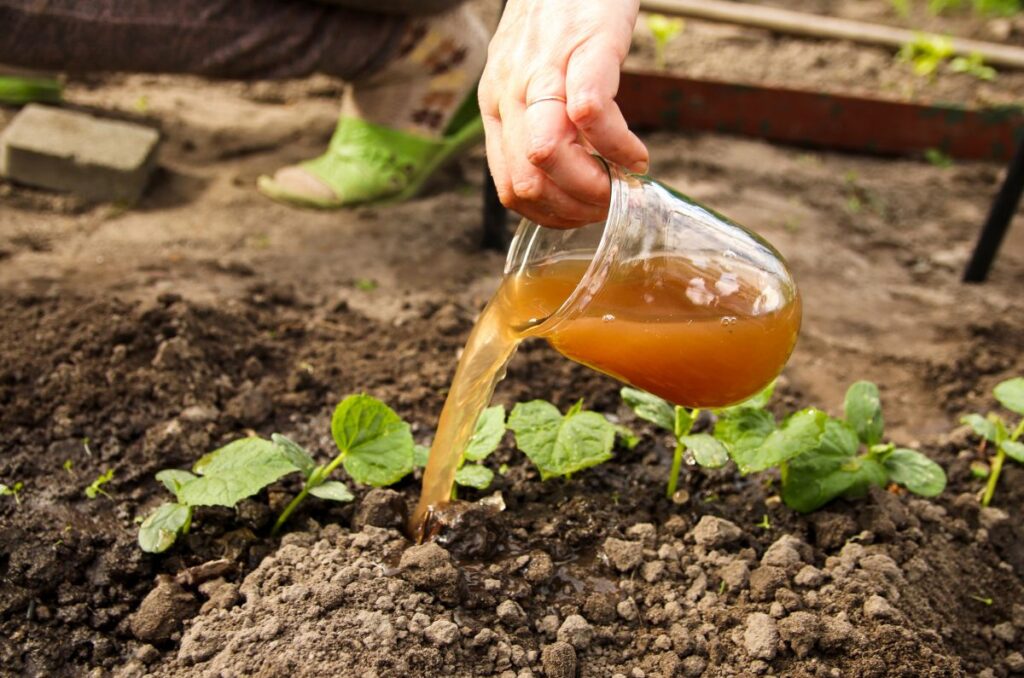
Liquid Fertilizers
Liquid fertilizers, on the other hand, are completely dissolved in water, creating a nutrient-rich solution. They need to be diluted with water before you apply them to your plants.
This category includes water-soluble fertilizers as well, which are fertilizers that still need to be dissolved before you use them.
Most liquid fertilizers still need some sort of decomposition before they become bioavailable, but it doesn’t take nearly as long as granular fertilizers.
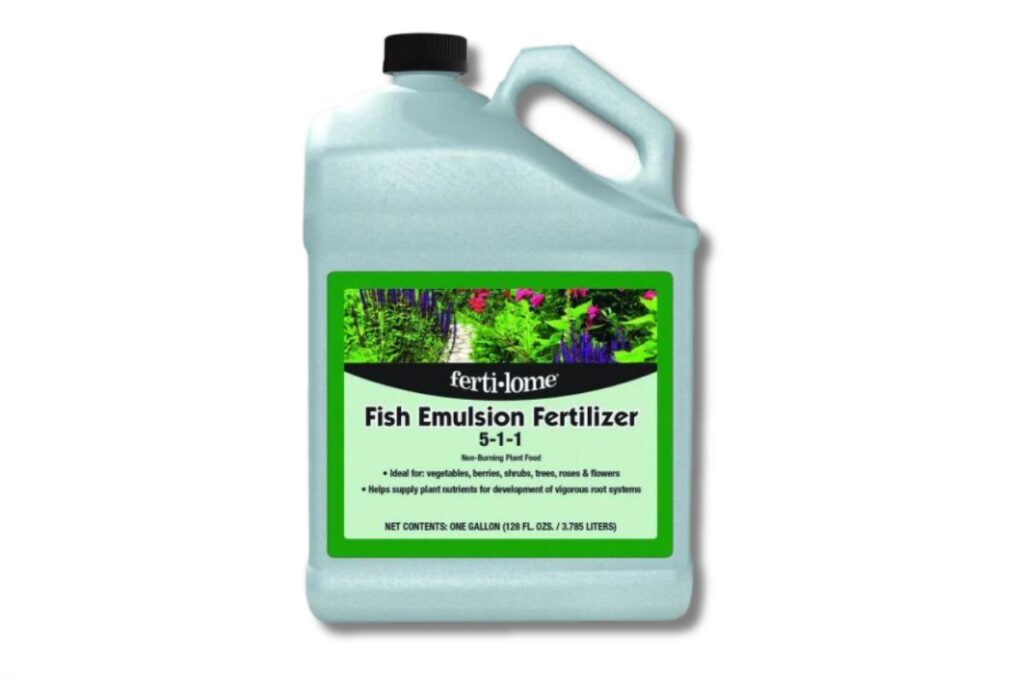
Fish emulsion, on the other hand, is made of almost entirely readily available nutrients. This is because of the enzymatic and fermentation processes involved with making fish emulsion.
That means the nutrients will be available to your lettuce plants much quicker than granular fertilizers.
Liquid fertilizer application frequency depends on how strong the solution is. Generally speaking, an application every 2 weeks during the growing season is ideal.
Best Fertilizer for Lettuce Plants
Now we’ll get into my list of my favourite fertilizers for lettuce to get a great harvest.

Compost
Compost is mostly made from decomposed plant material and some animal material, like eggshells. It’s great for adding organic matter to your soil and supporting soil organisms.
It is technically an organic fertilizer, but it has a very low NPK ratio. It’s usually about 1-1-1, so fairly low considering most fertilizers.
But the point of compost isn’t to add a bunch of nutrients, it’s to add organic matter.
As we’ve talked about, organic matter is eaten by soil organisms, which also break down organic fertilizers into a bioavailable form.
If you don’t have enough organic matter, then your soil organism population will decrease. This means that your plants won’t have access to as many bioavailable nutrients.
Add compost to your soil at about 30-40% of the total volume. This will give good aeration, water-retention, soil structure, and support of soil organisms.
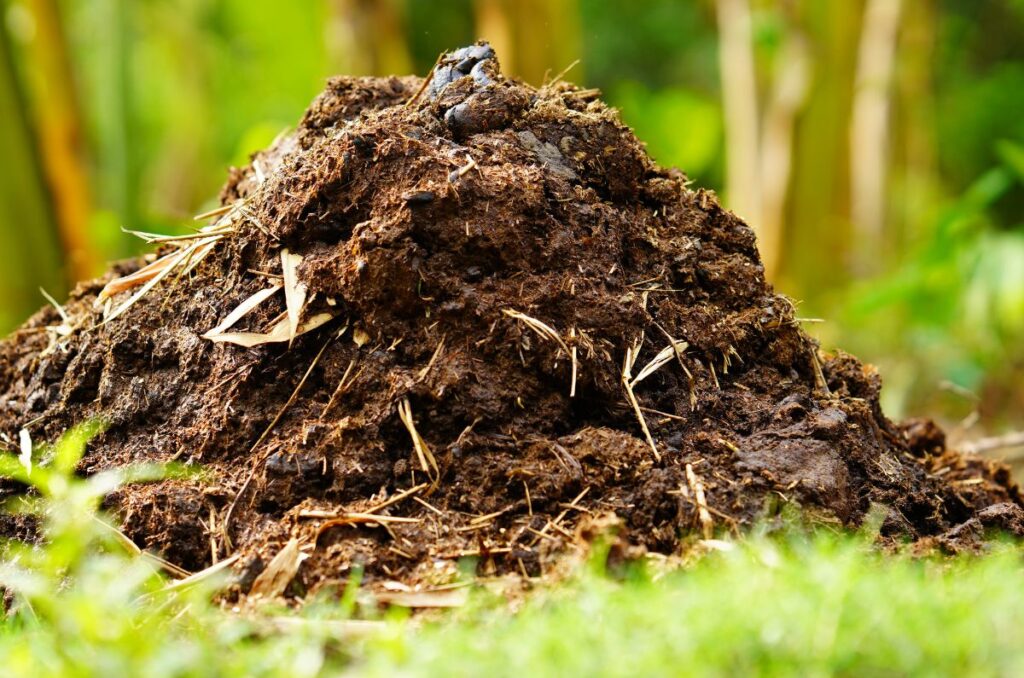
Manure
Manure is very similar to compost in the sense that it doesn’t have many actual nutrients. It’s mainly used to add organic matter and improve the structure of your soil.
The NPK ratio is roughly 1-1-1, making it very low in nutrients. But again, it supports the growth and development of soil organisms, which help make bioavailable nutrients for your plants.
In contrast to compost, manure is made completely from animal products, specifically animal poop. It repurposes this very common waste product from farms.
But it has to be broken down before you use it in your garden. It needs to age for at least 6-12 months. This process removes any pathogens that can harm your plants.
Apply manure at the same rate, roughly 30-40% of the total soil volume.
The best manures to use are cow, sheep, or goat.
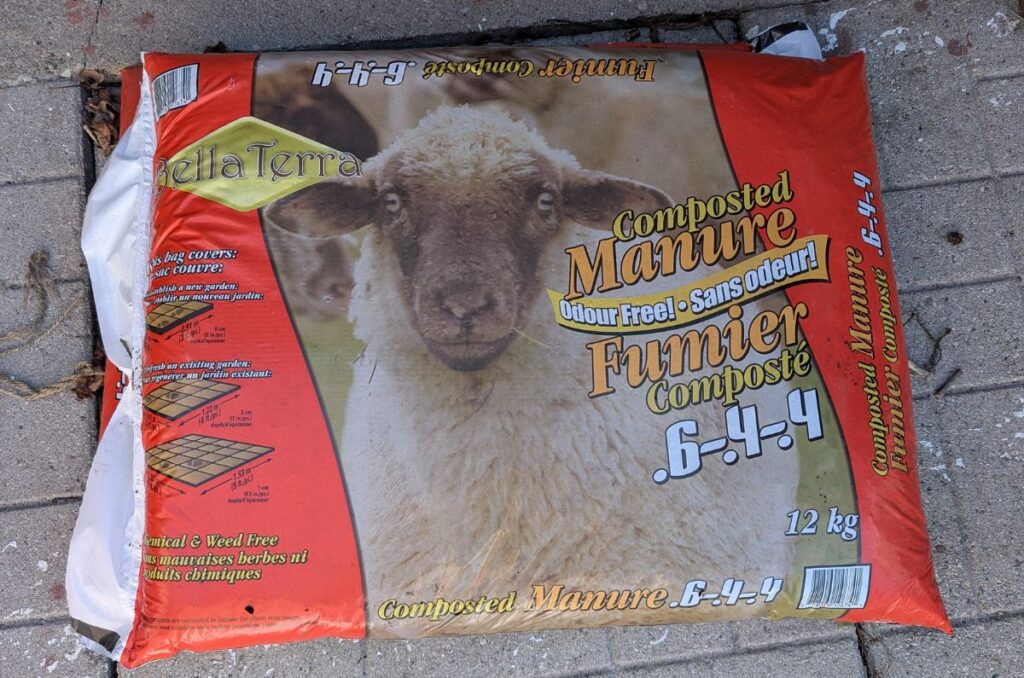
I just bought about 10 bags of sheep manure and added it to my garden. I don’t mix it in, I just broadfork it a little bit to get it down a little deeper.
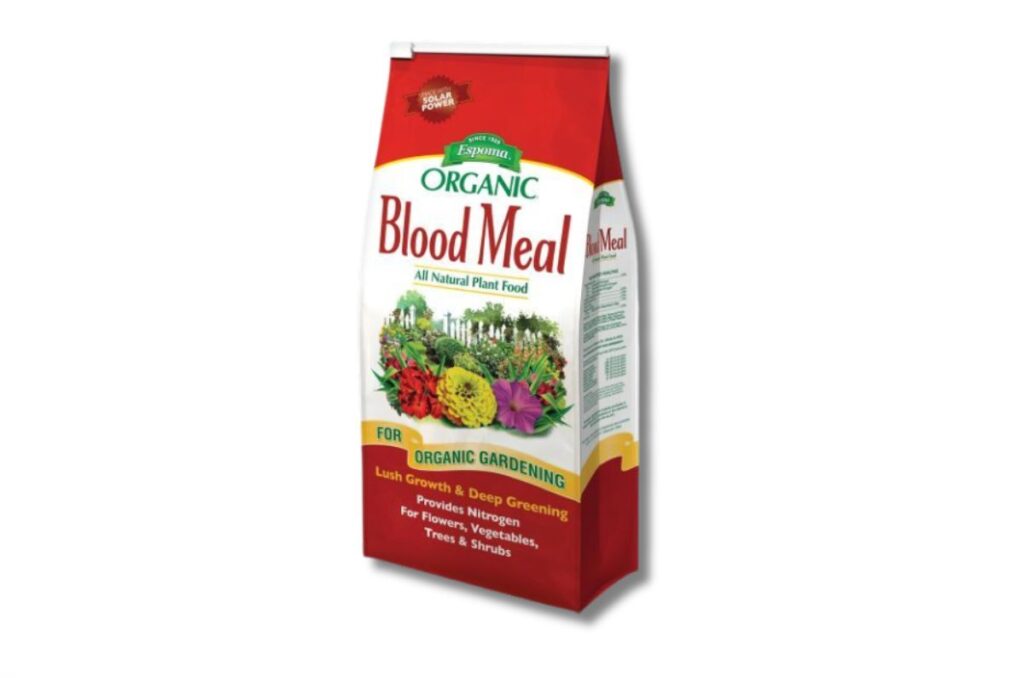
Espoma Blood Meal
I’ve spoken about blood meal in the past and everybody knows that I love it. It’s the perfect nitrogen-rich fertilizer for growing amazing lettuce.
It has an NPK ratio of 12-0-0, making it almost entirely nitrogen. It doesn’t have any phosphorus or potassium, but has many micronutrients like iron and magnesium.
And this shouldn’t be surprising considering the nutrient content of blood and other animal products.
I like to apply blood meal right at the beginning of the growing season. I put a nice pinch in the soil when transplanting my lettuce seedlings.
After the first application, you don’t really have to fertilizer again because blood meal is slow-release. This means it gets broken down very slowly, releasing its nutrients over a period of about a month.
And for anyone who thinks animal-based fertilizers are inhumane, then you’re wrong. Animals are generally not harvested for the sole purpose of making blood meal.
Blood meal is a byproduct of slaughterhouses. After the animals are killed (usually cows or pigs), the meat is sold in the store and the blood is collected to make blood meal.
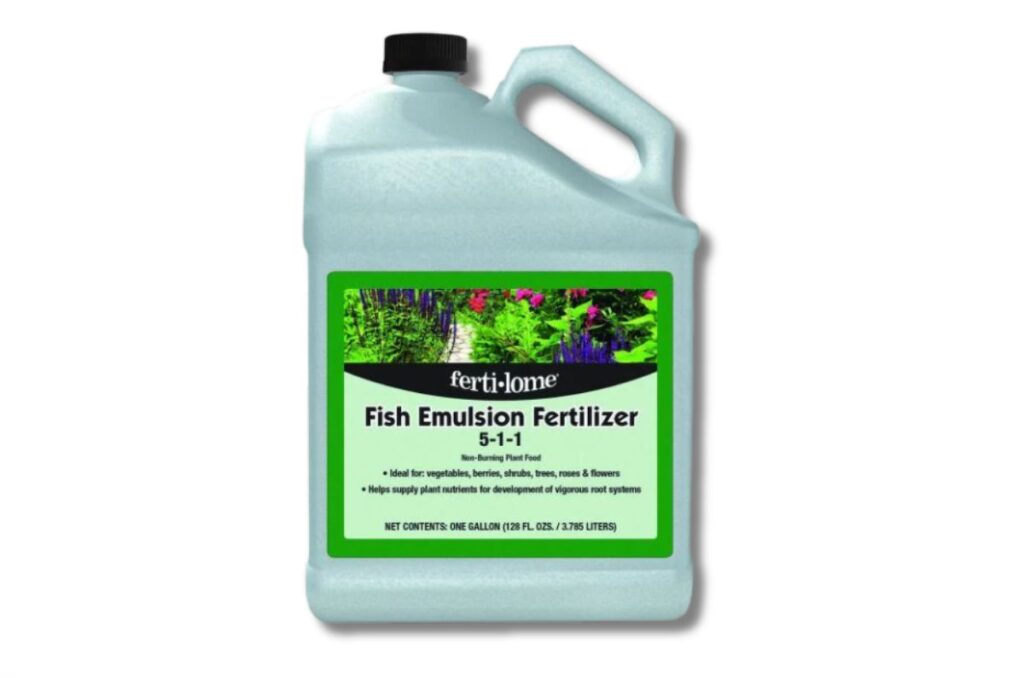
Fertilome Fish Emulsion
Fertilome Fish emulsion is made from grinding fish waste into a slurry, and then a bunch of enzymatic and fermentation processes. These processes make the fertilizer almost completely bioavailable right away.
It has an NPK ratio of 5-1-1, making it highest in nitrogen. This is perfect for growing healthy lettuce leaves.
Additionally, it also has 1% each of phosphorus and potassium, which is great for root development and overall plant health.
Fish emulsion also contains many trace elements, like calcium, chloride, and sulfur, which is great for many of the plants’ physiological functions.
It says to apply it every month, but I think that’s too little. You should apply a diluted fish emulsion every 2 weeks for your lettuce plants. Anything more is unnecessary and will burn your plants.
Fish emulsion is also a good fertilizer for lettuce seedlings. Just dilute it to half the strength and apply it to all your seedling cells once the first true leaves appear.
Again, if anybody thinks fish emulsion is cruel to fish, then you’re wrong.
Only sometimes do they harvest fish for the sole purpose of making fish emulsion. It’s almost always made from byproducts; the bones, heads, scales, and organs are used.
This is actually a very sustainable practice because they’re repurposing waste instead of throwing it into the landfill.
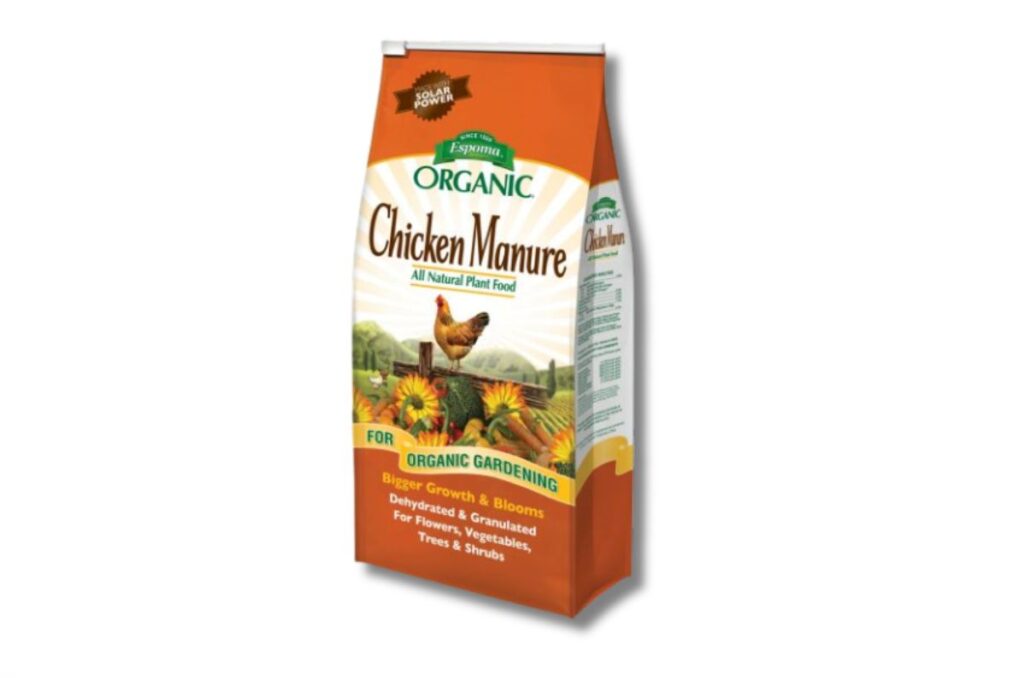
Espoma Chicken Manure
Chicken manure is not like other manures that I’ve talked about. It’s much more potent and can easily burn your plants if you use too much.
This is true for all of the smaller animals’ manure. The smaller the animal, the stronger the manure. And that’s why chicken manure is used more like an organic fertilizer.
It’s dehydrated and ground into a powder, making it easy to sprinkle in your garden.
It has a fairly balanced NPK ratio of 3-2-3. This gives your lettuce plants a good spread of nitrogen, phosphorus, and potassium. This helps with most plant growth patterns and functions.
It also has many micronutrients, like calcium, magnesium, and sulfur. These help with many of the physiological functions of lettuce plants.
Apply a good dose of chicken manure in the planting hole when transplanting seedlings. This’ll give them the boost they need for the rest of the time they’re growing.
You generally don’t have to do another application if you put enough the first time.
This is another fertilizer for lettuce that repurposes a common waste product, chicken manure. Or else, they’d be throwing all that into the landfill.
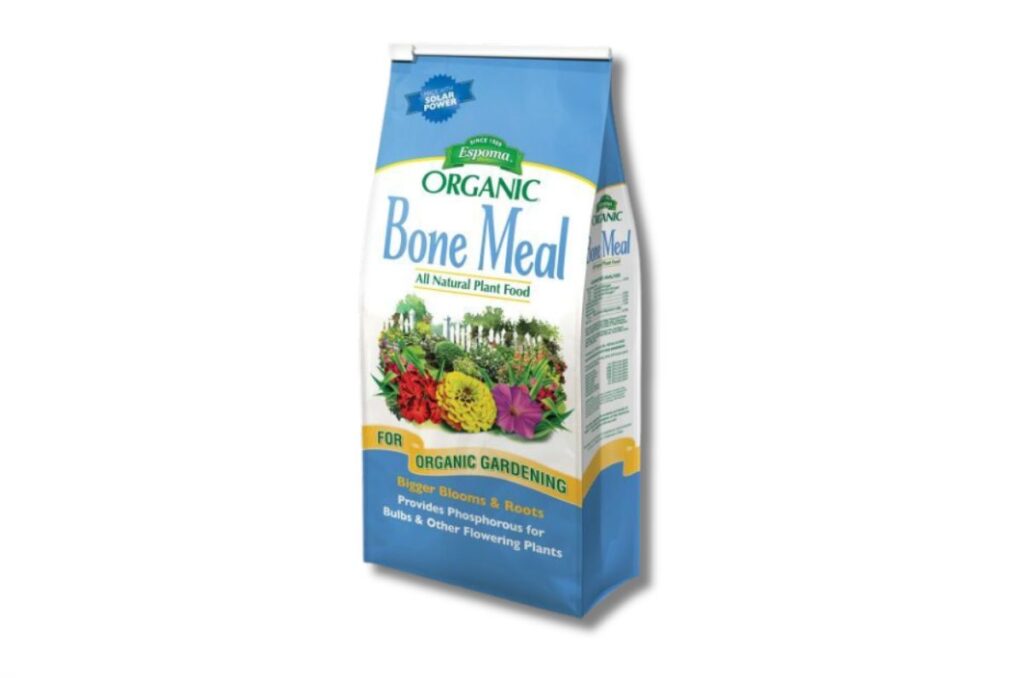
Espoma Bone Meal
This is another favourite of mine: bone meal. It’s made from cooking, dehydrating, and grinding animal bones into a fine powder.
Again, for those of you that think this is inhumane, it’s just not. Bones are going to be produced through regular meat consumption, it’s whether we use them or not that’s the problem.
By using them to make bone meal, we’re redirecting all that waste from the landfill into our vegetable gardens.
It has an NPK ratio of 4-12-0, making it higher in phosphorus than nitrogen. This might confuse you because I’ve said so much about how lettuce needs so much nitrogen.
But when combined with blood meal, you get the perfect supply of nitrogen and phosphorus for healthy leaves and roots.
I like to put a nice pinch of both blood and bone meal into the planting hole when I transplant my lettuce seedlings.
This is definitely my go-to fertilizer mix, so I hope you have good results with it.
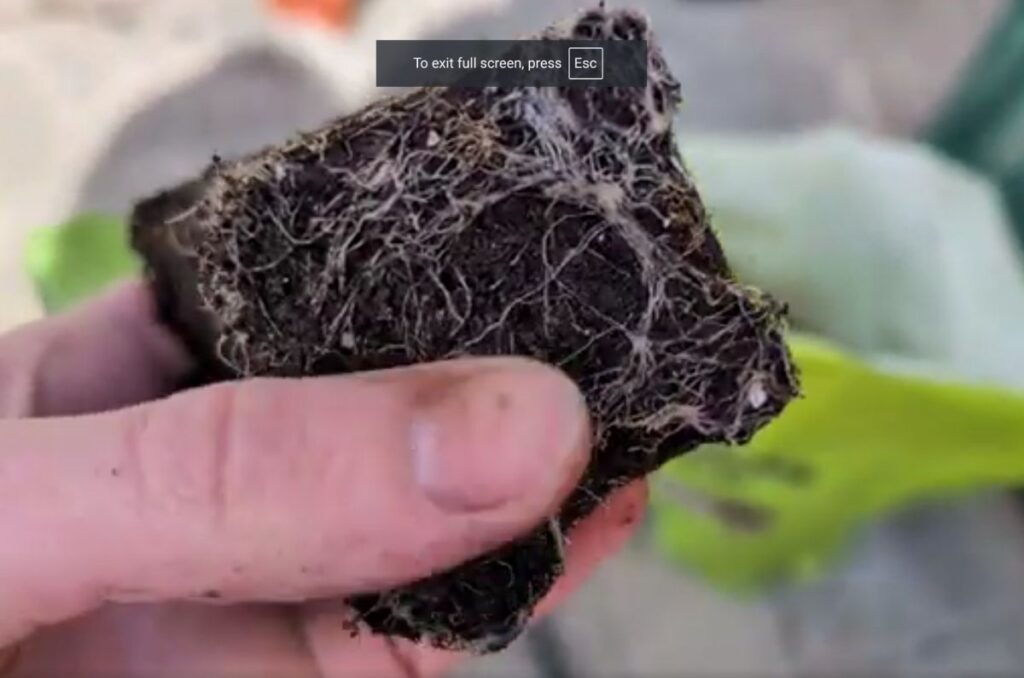
When to Fertilize Lettuce Plants
When you fertilize your lettuce plants depends on which fertilizer you’re using.
For granular fertilizers, you really only need to apply them once at the time of transplanting. Add a good pinch in the planting hole before you plant your seedling.
This usually supplies nutrients for the entire plant’s lifespan, especially considering that lettuce plants only mature in 30-60 days. Granular fertilizers release their nutrients over a period of about 1-2 months.
For liquid fertilizers, you’re going to have to apply them every 2 weeks or so during the growing season. This is because they’re weaker and their nutrients are more bioavailable to your plants.
This means they don’t have to be broken down before your plants use them. Things like fish emulsion and other liquid fertilizers can be applied to your lettuce plants every 2-3 weeks for a constant nutrient supply.
Frequently Asked Questions
Any lettuce liquid fertilizer is great for indoor lettuce plants. Fish emulsion is definitely the most popular for seedlings and indoor lettuce growing.
Because of the relatively low nutrient requirements for lettuce plants, foliar fertilizers are unnecessary. Just put some fertilizer in the soil, they don’t need it on the leaves.
Urea is a natural nitrogen-containing compound that is commonly used as a fertilizer for lettuce. But there’s an even better way to get urea: from your urine. That’s right, you can use urine as a fertilizer for lettuce.
Even More Gardening Ideas
Here are a few more posts to get the ball rolling in your garden!
- The Best Cucumber Fertilizer Tricks
- How to Use Manure in the Garden
- 5 Vegetables to Grow in Hanging Planters
If you liked this article, make sure to share it with your friends and family members who are also looking to sharpen their gardening skills. Also, consider signing up for our email newsletter; don’t worry, we won’t spam you, just fresh gardening ideas every week!
If you want to learn more about vegetable gardening, make sure to check out what I’m doing on Facebook, YouTube, and Pinterest.
Pin this post for later:
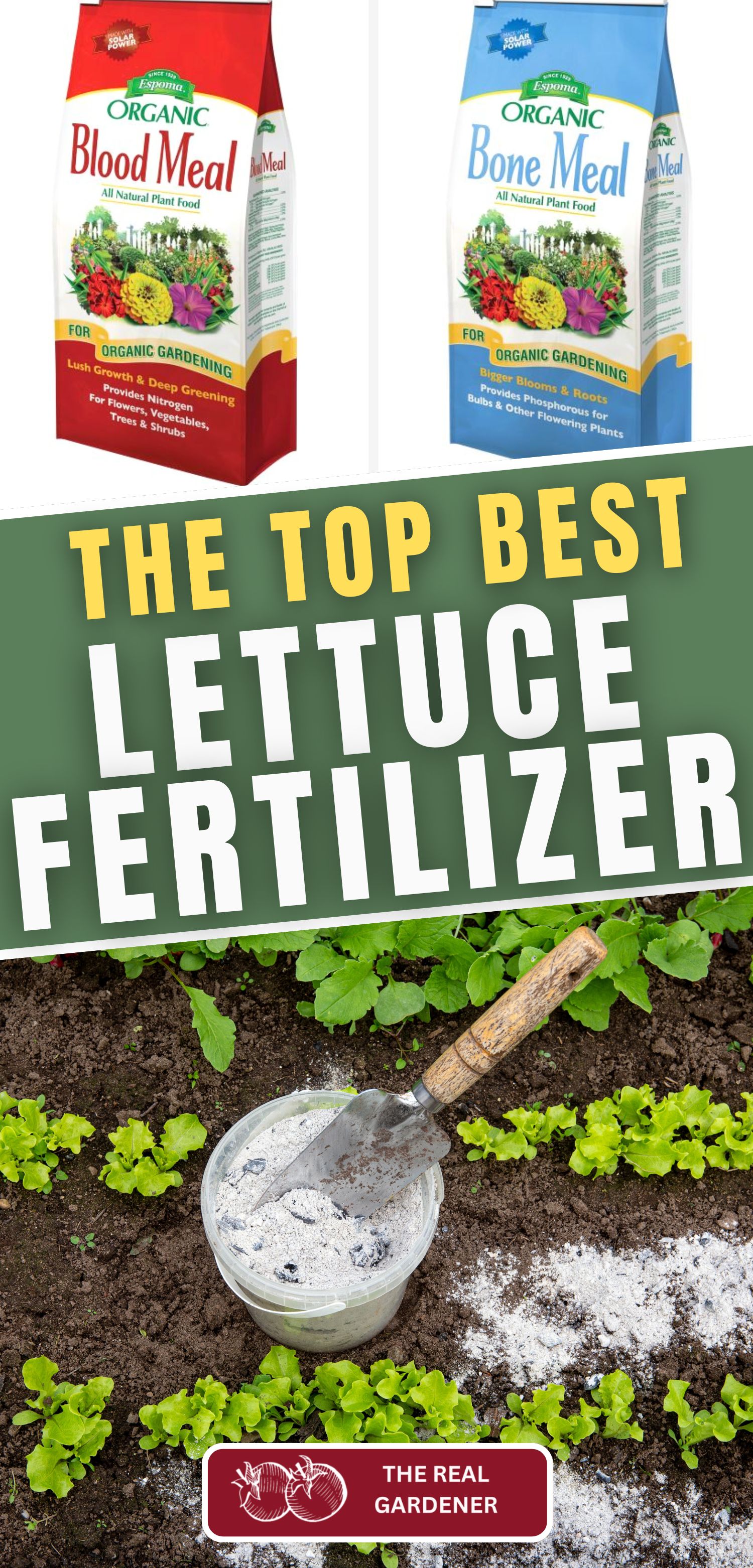
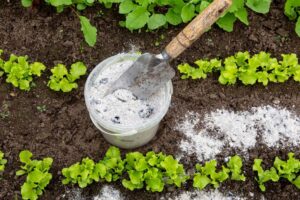
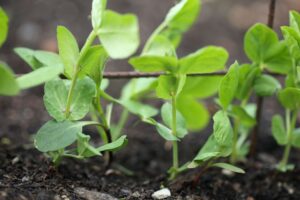
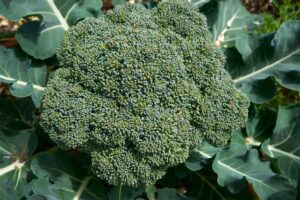
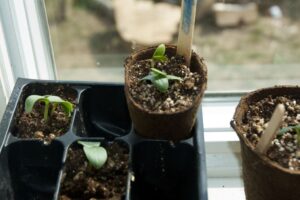
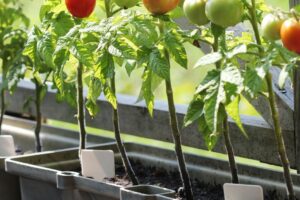
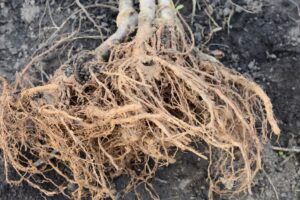
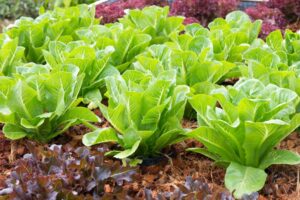
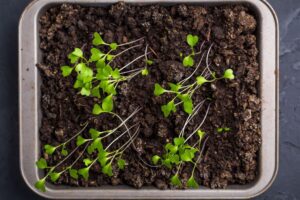
Leave a Reply